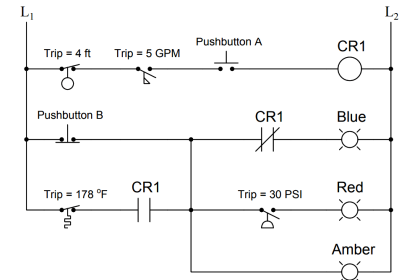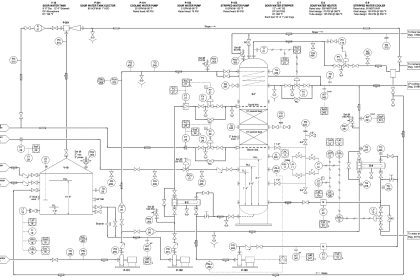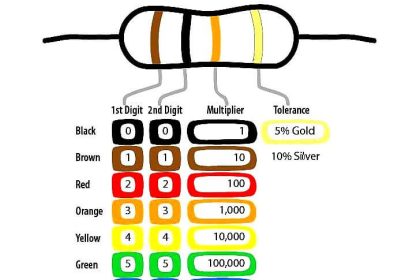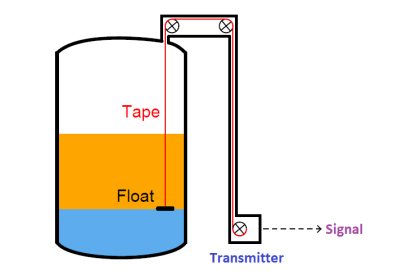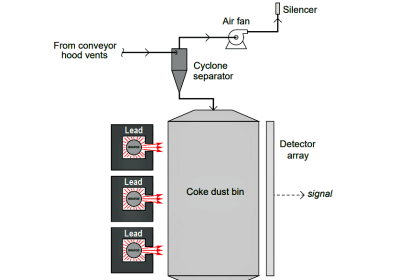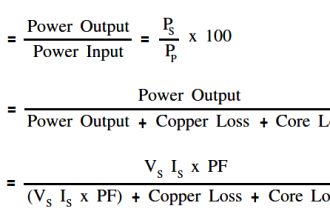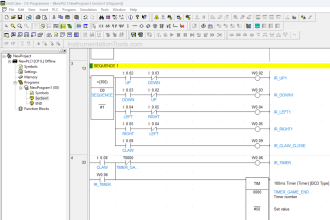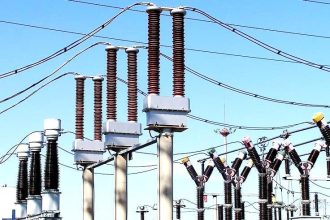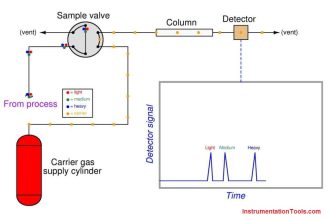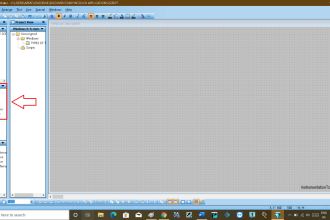This air compressor control circuit has a problem. The air compressor refuses to start even when the air pressure is zero PSI.
Air Compressor Control Circuit
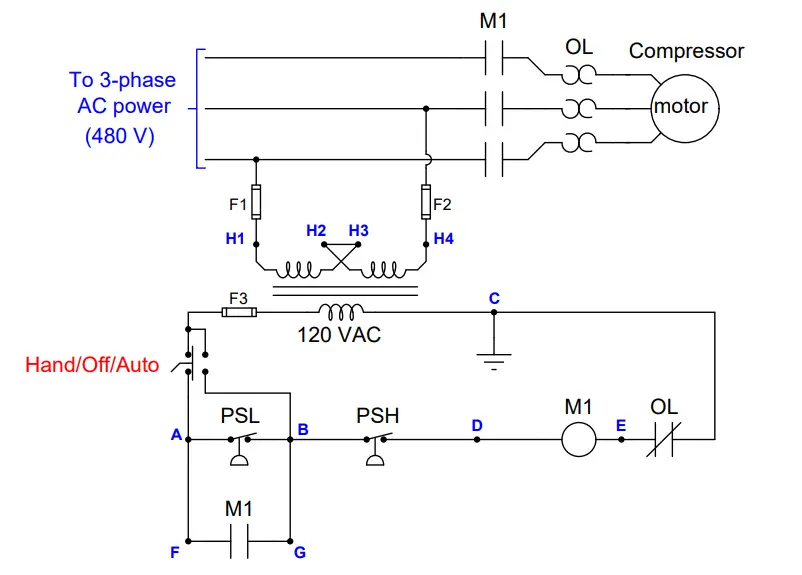
A technician begins diagnosing the circuit, following the steps shown (in order):
Test 1: Measured 120 VAC between points A and C, with “Hand/Off/Auto” switch in the “Auto” position.
Test 2: Measured 120 VAC between points A and D, with “Hand/Off/Auto” switch in “Auto” position.
Test 3: Measured 0 VAC between points E and C, with “Hand/Off/Auto” switch in “Auto” position.
Test 4: Jumpered points A and B, with “Hand/Off/Auto” switch in “Auto” position. The motor did not start.
Identify any useful information about the nature or location of the fault derived from the results of each test, in order of the tests performed. If the test is not useful (i.e. provides no new information), mark it as such.
Assuming there is only one fault in the circuit, identify the location and nature of the fault as precisely as you can from the test results shown above.
Answer:
Test 1: Measured 120 VAC between points A and C, with “Hand/Off/Auto” switch in the “Auto” position. Proves there is 120 VAC control power available, that the fuse is good, and that the Hand/Off/Auto switch is passing power through to point A.
Test 2: Measured 120 VAC between points A and D, with “Hand/Off/Auto” switch in “Auto” position. Proves there is an “open” fault somewhere between those points, in one of the two switches, and that we do not have any other “open” faults in the contactor coil circuit.
Test 3: Measured 0 VAC between points E and C, with “Hand/Off/Auto” switch in “Auto” position. This is an unnecessary test, as we already know there is continuity through the overload contact.
Test 4: Jumpered points A and B, with “Hand/Off/Auto” switch in “Auto” position. The motor did not start. Combined with the results of previous tests, this test proves the “open” fault must lie between points B and D: namely the PSH.
The fault is an “open” high pressure switch (PSH), or in the wires connecting the PSH to points B and D.
Share your answers with us through the below comments section.
Read Next:
- Compressor Seal Oil System
- PLC Compressor Logic
- Instrument Air Compressor
- Liquid Level Switch Control
- PLC Water Level Control Logic
Credits: Tony R. Kuphaldt
